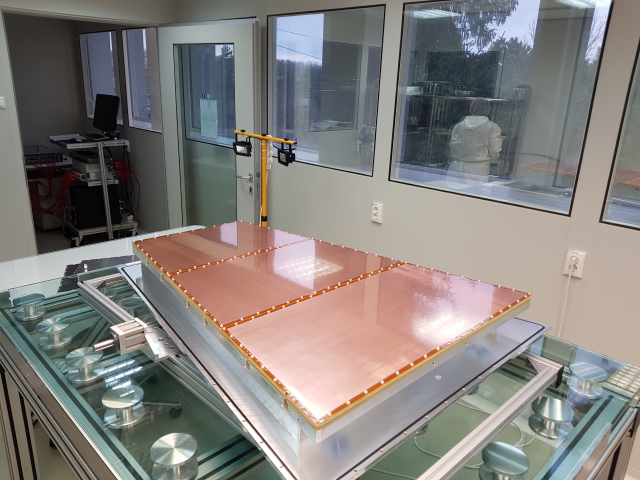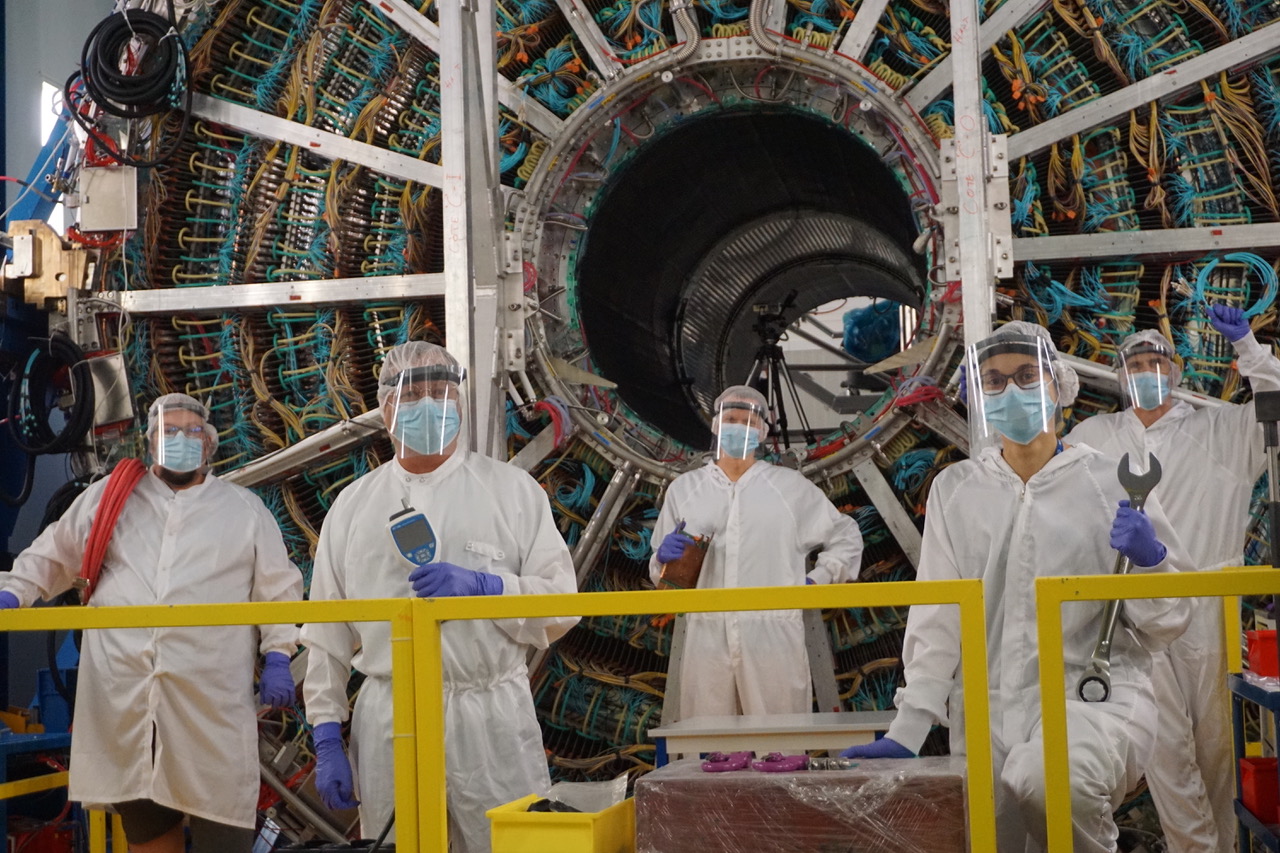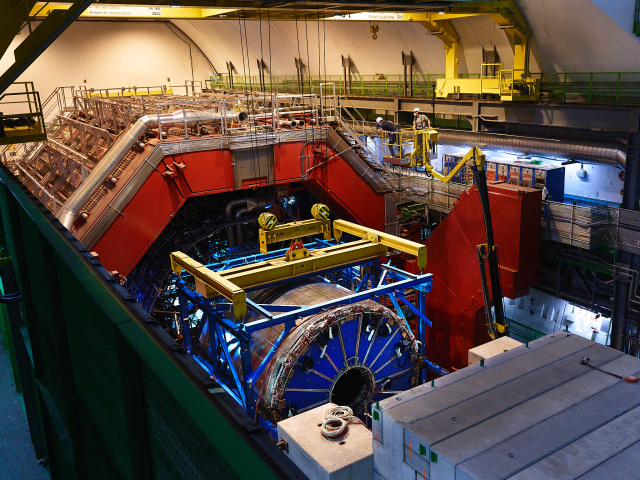
The ALICE Time-Projection Chamber (TPC) is the main device, in the ALICE ‘central barrel’, for tracking of charged particles and particle identification. The ALICE TPC was designed to cope with the highest conceivable charged particle multiplicities produced in central Pb–Pb collisions at LHC energies. Its acceptance covers 2π in azimuthal angle and a pseudo-rapidity interval |eta| < 0.9.
The ALICE TPC is a 90 m^3 cylinder filled with gas and divided in two drift regions by the central electrode located at its axial centre. The field cage secures the uniform electric field along the z-axis. Each of the two end plates is divided into 18 sectors, each holding one Inner ReadOut Chamber (IROC) and one Outer ReadOut Chamber (OROC). In total, the TPC readout is based on 36 IROCs and 36 OROCs.
Charged particles traversing the TPC volume ionise the gas along their path, liberating electrons that drift towards the end plates of the cylinder. The necessary signal amplification is provided by Gas Electron Multipliers (GEMs) in an optimized multilayer configuration, which stand up to the technological challenges imposed by continuous TPC operation at high rate. The requirement to keep the ion-induced space-charge distortions at a tolerable level leads to an upper limit of 2% for the fractional ion backflow, i.e. the ion escape probability per effective electron-ion pair produced in the gas amplification stage, at the operational gas gain of 2000 in a Ne-CO2-N2 (90-10-5) gas mixture. At the same time, the readout system provides a local energy resolution better than 14% at the ^{55}Fe-peak, which translates into the required dE/dx resolution of the TPC.
The readout of the signal is done by the 524160 pads that form the anode plane of the GEM chambers located at the TPC end plates. Each pad is connected to a front-end electronics channel. 160 front-end channels are
combined in Front-End Cards (FEC). On each FEC, the signals are transformed into differential, semi-Gaussian voltage signals, and continuously digitized in five custom-made ASICs (SAMPA). The FEC further incorporates two optical readout links for the digitized data, and one control link, which also provides the reference clock to the digital circuitry on the FEC. In total, 6552 optical TX (transmit) links are needed to send the digitized data off-detector. This leads to an unprecedented data throughput of 3.28 TB/s. 360 FPGA-based readout cards (Common Readout Unit, CRU) receive the data and perform online processing (common mode correction and data reduction).
TPC Documents |
TPC Internal: |
Photo Galleries |
|
Participating Institutes:
|






